An intimate curlew behavior I’ve only seen once and I was lucky enough to document it with photos.
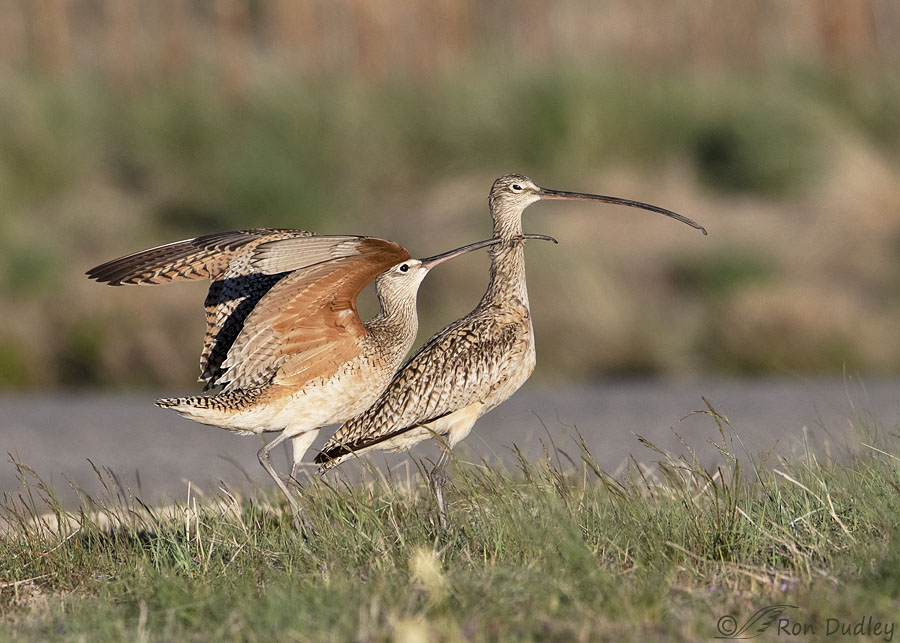
1/3200, f/7.1, ISO 640, Canon 7D Mark II, Canon EF 500mm f/4L IS II USM + EF 1.4 III Extender, not baited, set up or called in
In April of 2016 I watched for almost six minutes as the male Long-billed Curlew on the left performed fairly elaborate precopulatory courtship displays in an attempt to get his mate ‘in the mood’. What we’re seeing here is called “bill-stroking” as the male strokes both sides of the female’s body with his long, recurved bill.
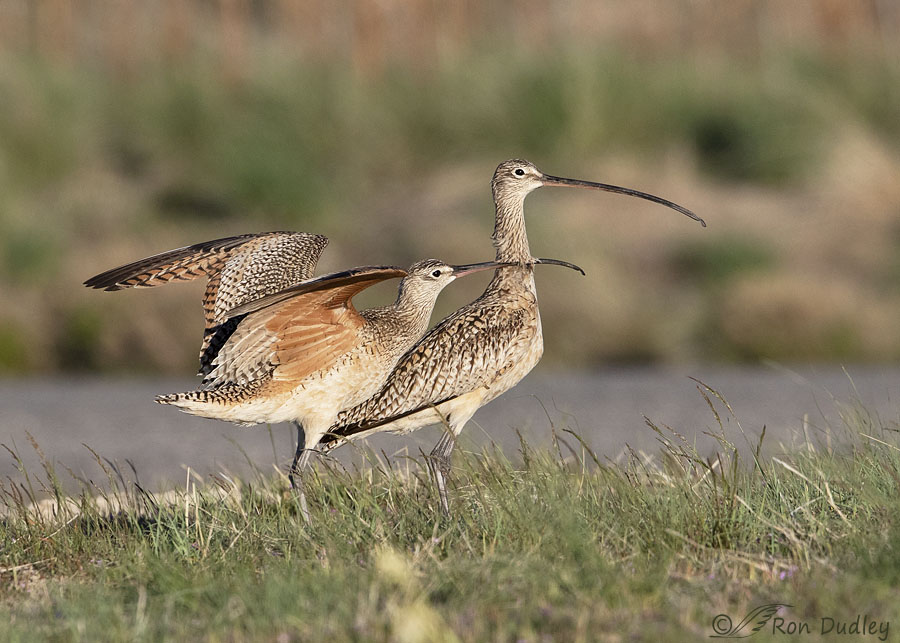
1/4000, f/7.1, ISO 640, Canon 7D Mark II, Canon EF 500mm f/4L IS II USM + EF 1.4 III Extender, not baited, set up or called in
Cornell’s Birds of the World says bill-stroking can last for over a minute and this male went at it for at least that long. He concentrated on stroking her long neck and she seemed to enjoy all the attention. They often had their backs to me but for a few seconds they cooperated by giving me a broadside view in good light.
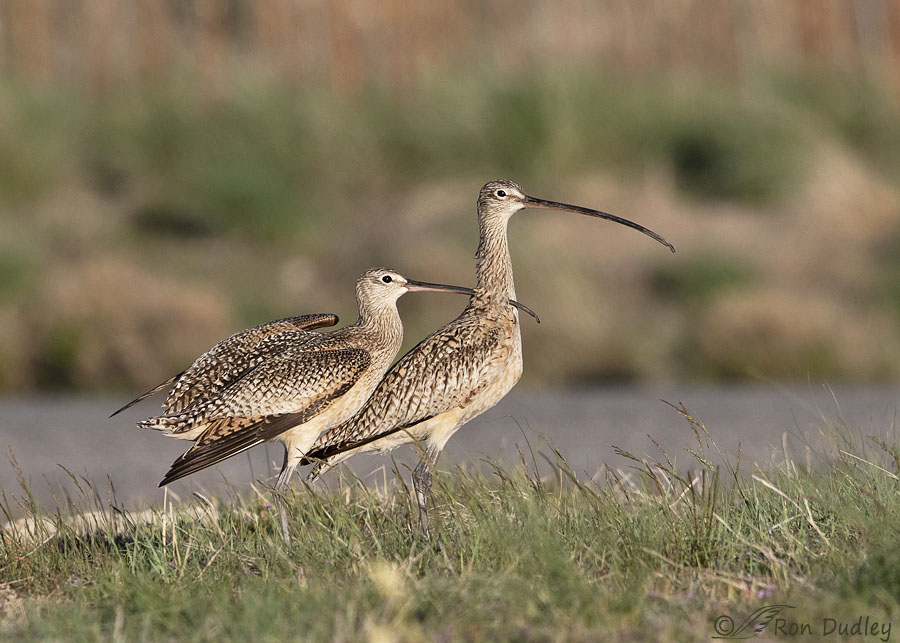
1/3200, f/7.1, ISO 640, Canon 7D Mark II, Canon EF 500mm f/4L IS II USM + EF 1.4 III Extender, not baited, set up or called in
For most of that time she stood in one spot as he stroked her which gave him both the time and the opportunity to work over the right side of her neck and eventually…
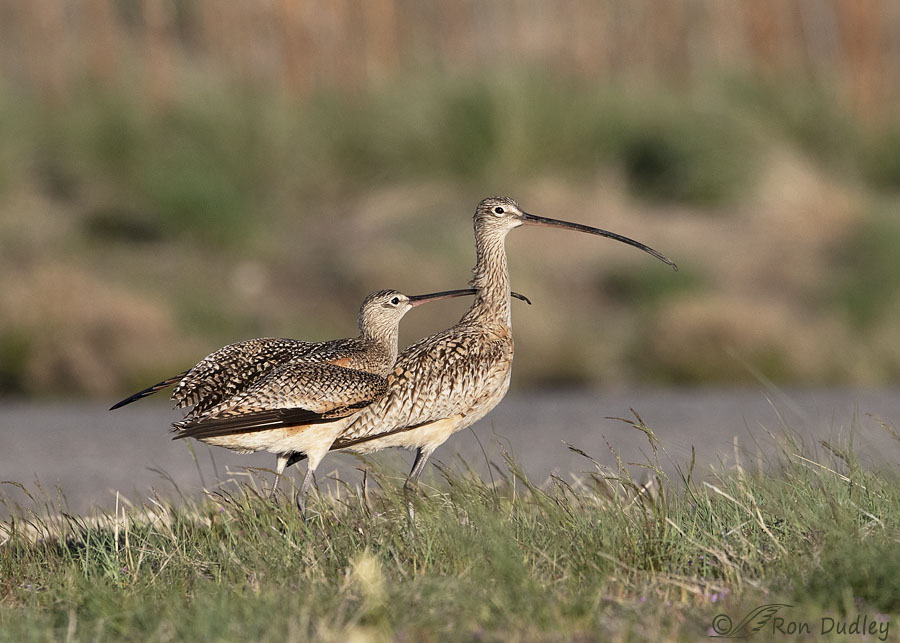
1/3200, f/7.1, ISO 640, Canon 7D Mark II, Canon EF 500mm f/4L IS II USM + EF 1.4 III Extender, not baited, set up or called in
the left side of it too.
She was seeming to bask in all the attention but when it came time to mount her she apparently had a change of heart.
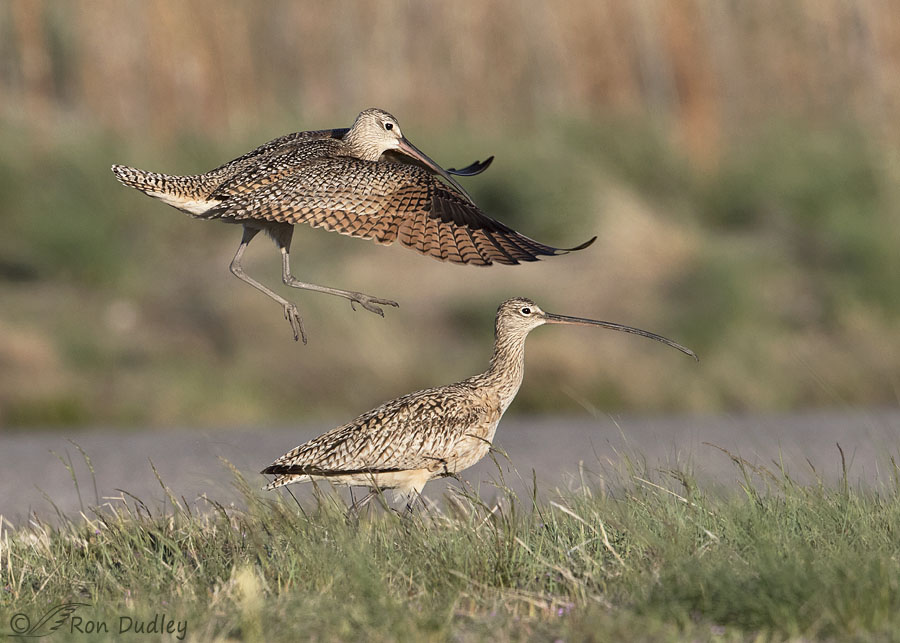
1/3200, f/7.1, ISO 640, Canon 7D Mark II, Canon EF 500mm f/4L IS II USM + EF 1.4 III Extender, not baited, set up or called in
When he attempted to hop on her back she began to walk forward which made her back an unstable platform so he wasn’t able to complete the act. Not this time anyway.
Apparently it isn’t unusual for the female to put the kibosh on the male’s hopes and plans at this point in his courtship efforts. Cornell says that at the conclusion of bill-stroking the male will mount the female for copulation “if the female does not walk away”.
This last photo is a favorite of mine (it’s the only one in this series I’ve posted before). It’s unusual, even rare, for me to get a photo documenting an interesting behavior that’s also beautiful and I think this one is.
Ron
Note: In Long-billed Curlews the sexes are similar but females average larger than males and they also have longer bills. In this series both of those distinguishing traits are apparent.


I love this series, Ron. Your patience certainly paid off. The vibrant colors of the male Curlew’s wings when he spreads them is striking. Congrats on capturing this courtship behavior. Isn’t it a bit late in the season for mating?
Thanks, Melanie. As I said in my post these photos were taken “in April of 2016”.
This is fascinating. I managed to photograph the rituals of a pair of Black-necked Stilts: the water-stirring, the mating, and the bill-crossing. What was most amazing was seeing the ‘couple’ set off for a stroll together after the mating, walking perfectly in tandem for nearly five minutes before they separated. There are things going on out there that are unbelievably sweet, like what you’ve shown here.
Sensational series Ron!
Charlotte
Ooooh. Soooo close — and yet, so far. Poor guy, foiled again.
I will admit that I feel a little odd seeing such an intimate behavioral sequence. Thank you for sharing it with us!
Yup, it’s borders on voyeurism doesn’t it, Marty.
I LOVE Long-billed Curlews.:) Unfortunately we are seeing them less and less frequently in recent years 🙁 Have never witnessed a courtship display. Guess one could call her a “tease”…. 😉
Last evening I learned swallows are quite effective swimmers. One “drove” another into the water(or the one being chased miscalculated) and it just used it’s wings for paddles….😲 Very deliberate and not frantic actions!
Wow, that would have been something to see, Judy.
Beautiful series! That last one is gorgeous. I’ve never had the fortune to see these birds except in photos – thanks!
Thanks, Joanne.
What an outstanding series Ron. We don’t have them here in the East, but I have seen them at AI when there in the Spring.
Thank you, Gary.
Better luck next time.
You are right about the incredible intimacy of this series.
And the beauty of the final shot – though if you rub my feathers the wrong way, I will walk away too.
I hope he had a ‘next time’, EC. I’ll bet he did.
Another very instructive series, Ron. So that’s where the term “necking” come from (groan). I can’t blame the female for walking away from that descending sex bomb; doesn’t look like the most subtle approach. Your photo reveals an interesting anatomical feature that doesn’t appear in any of the illustrated field guides I looked in: the slightly longer upper mandible. I don’t see it mentioned in BotW. One wonders about its function.
Lyle, I liked your ‘groan’.
Actually BotW does mention the longer bill of the female in the first paragraph under “Appearance”. It says “female averages larger with longer bill than male (male bill approx. 139 mm, female bill approx. 170 mm)”.
Amazing behavioral series! It reminds me of the saying, “It’s a woman’s perogative to change her mind.”
I’ve never seen this behavior, although I’ve seen the curlews migrate through parts of Colorado. Would love to have the opportunity.
Don’t feel bad, Nancy. I’ve only seen it once and I’ve spent a lot of time with curlews during breeding season.
Nice! A whole series of excellent and interesting photos but just as it is about to transition to “R Rated” you fade to text!
Excellent post this morning. Thanks
Porcupine, it’s unlike me to fade away just prior to the risque stuff. That’s usually when things get most interesting!
Hahahaha – what Kris said.Beautiful photo indeed along with a great story.
Thank you, Kathleen.
Poor guy ! It appeared to me that he was stroking her neck in an UPWARDS
direction ( her neck feathers seemed to be overlapping his bill ) rather than’
a downwards, caressing motion, which is what I would have expected–
maybe he was “rubbing her the wrong way” ? ( sorry, couldn’t resist ! )
Kris, I think he was stroking upwards, at least when these photos were taken.
I’m glad you didn’t resist…
That last one is a beautiful photo and definitely rare to get one with the male in the air in the process of mounting the female. First the photographer has to have the patience to stay focused on the entire process in order to get a photo like this. This last photo is the prize of course, but those first two photos with the male’s upraised wings are damn good.
I have never seen a Curlew. We show them here as “unusual” and only seen during spring and fall transitions.
“I have never seen a Curlew”
They’re one of my favorite birds Everett, especially in the spring when they have so many interesting behaviors.